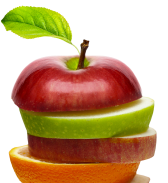Table Of Contents
What is Reverse Dieting?
The phrase “the diet after the diet” is frequently used to describe a reverse diet. This is because it has long been a common practice in the bodybuilding community to gradually increase caloric intake following competitions to slow the rate of weight gain.
Additionally, it has gained enormous popularity among the general public as a transitional diet between a low-calorie diet and returning to regular eating. Theoretically, a reverse diet enables you to eat more while preventing weight gain from fat storage.
You might need clarification on whether this eating plan actually works or if it’s just a fad diet even though it seems promising.
To enable you to eat more food after a diet, increase your metabolism, and prevent fat (re)gain, reverse dieting is a deliberate eating plan that gradually increases your calorie intake over a few weeks or months.
This approach to eating first gained popularity among bodybuilders who wanted to avoid gaining weight quickly after a competition. Athletes competing in bodybuilding contests must adhere to highly restrictive and unsustainable diets to acquire their ideal physique.
They resume more calorie-dense, sustainable eating habits when the tournament is done. However, since the body’s metabolism slows down during restrictive periods, rapidly continuing a significantly larger calorie intake may result in rapid fat and weight gain.
Reverse dieting to lose weight gained popularity among non-bodybuilders, such as people who follow low-calorie diets or believe they are hitting weight reduction plateaus, as a result of several anecdotal success stories.
To help bodybuilders gradually switch back from extremely low-calorie diets to higher-calorie diets, reverse dieting was developed. The theory was that by taking it slowly, they would gradually increase their metabolic rates, enabling them to eat more while avoiding excessive weight gain.
- The concept of reverse dieting is based on adaptive thermogenesis (metabolic adaptation), a defensive mechanism that modifies the body’s metabolism to slow down weight loss by increasing energy intake and decreasing energy production.

How to Do Reverse Dieting – Eat More to Lose Weight
To increase metabolism and prevent weight gain after dieting, reverse dieting is gradually increasing your calorie intake. However, its alleged effects on weight loss need to be supported by science and can be challenging to follow.
According to one study on reverse dieting, it “…provides a small caloric surplus [to] help… restore circulating hormone levels and energy expenditure toward pre-diet values, while closely matching energy intake to the recovering metabolic rate to limit fat accretion.”
Jumping back on the diet bandwagon is unlikely to provide results for those with a history of crash dieting, extreme calorie restriction, or numerous unsuccessful diet attempts. On the contrary, it is likely to cause more harm than good.
Your metabolism suffers over prolonged periods of calorie restriction. Your body reacts in some ways when your calorie intake is too low for an extended period. The main effect is that it lowers your daily caloric expenditure, frequently setting the stage for a surprise quick weight gain.
- This biological mechanism, called “metabolic adaptation,” can seriously thwart your attempts to lose weight. Eating fewer calories than you burn can eventually prove to be very challenging because your body is constantly battling to reverse the calorie deficit required for fat reduction. Before that lifestyle becomes terrible and impossible to maintain, you can only reduce calories so much and exercise so much.
For most individuals, all the macro counting, weighing and measuring, constrained dietary choices, and exact nutrient timing simply need to be clarified. In reality, bodybuilders can’t even endure the diets that many of them adopt to achieve competition-lean.
Bodybuilders adhere to highly tight diets for weeks before competitions, which gives them abs you could grate cheese on but has the unfavorable side effect of reverse dieting to fix metabolism.
After contests, if they continued in this manner, the hunger would finally become intolerable. Therefore, in the off-season, competitive bodybuilders frequently aim to put on as much muscle as possible, which is practically impossible when following a low-calorie diet.
But just like everyone else, bodybuilders gain a lot of fat to go with their muscles when they eat as much as they want.
Also, read – Where Do You Lose Weight First?
What You Need To Know About The Process Of Reverse Dieting
Let’s first discuss how weight gain and decrease operate. Each individual has a BMR and TDEE. Your basal metabolic rate (BMR), or the number of calories you burn only to be alive, is referred to as this. You would still need calories if you did nothing except lie on a bed. Energy is required for basic human processes, including breathing and blinking. Your BMR takes this into account.
Your entire daily energy expenditure is known as TDEE. It is also known as maintenance calories, and it relates to the number of calories you burn while going about your daily business. You must eat these calories daily to keep your weight stable. Consider the calories from your daily activities like walking, talking, and exercising in addition to your BMR.
To lose weight, you must adhere to the calories in minus calories out rule. To be in a calorie deficit, you must consume fewer calories than you burn. Is that easy? It’s easier said than done, as we all know. You can find yourself eating incredibly few calories only to reduce your weight.
Reverse dieting to lose weight, as opposed to calorie restriction, is the key. It will aid in resetting your metabolism and raise your maintenance calorie intake, enabling you to consume more food.
A few processes within the body allow for this:
- Hormone changes.
Hormones play a critical role in hunger regulation, with the body releasing and suppressing different hormones to increase or decrease appetite.
Ghrelin is released primarily from the stomach lining and stimulates appetite; when its levels increase, hunger is increased. Insulin is also a key hormone in hunger signaling and plays an essential role in controlling blood sugar levels.
The digestive system produces leptin and peptide YY to coordinate energy balance, reduce food intake, and signal fullness levels. By making these hormones, our bodies encourage us to eat what is necessary for vitality and energy, so you need to know how to reverse your diet properly.
- Slowed digestion.
During periods of calorie restriction, the body is forced to adjust its physiological processes to adapt. For example, the digestion process typically slows down as the body seeks to maximize nutrients and calories that can be absorbed from food.
Additionally, this type of dietary regimen causes decreased thermic effect of food (TEF), meaning that it takes less energy to metabolize fewer calories consumed on such diets. Therefore, for individuals seeking sustainable and healthy weight loss, it is crucial to choose an approach with a lifestyle change focus rather than constant changes in caloric intake, which alters thermogenic judgment over time.
The Health Benefits of Reverse Dieting
According to research, increasing your caloric intake can boost your metabolism and help you burn more calories through thermogenesis, a type of non-exercise activity. Therefore, your body will continue to burn calories even if you walk, move around, or converse with a friend. What great news.
In some instances, reverse dieting has also aided in the body’s hormonal regulation, particularly leptin, which is linked to weight loss. Leptin, which is produced by your body’s fat cells, is thought to be less sensitive to reduced calorie consumption.
Therefore, when your body’s leptin levels decline, you experience constant hunger and end up gaining weight instead of decreasing it.
Although this is a fantastic technique to enhance your weight reduction game, doctors advise against using it for longer than ten weeks. This is because it primarily emphasizes calorie counting, which is not the ideal approach to preserving health and fitness!
So ladies, jumpstart your metabolism immediately and employ reverse dieting as a short-term weight loss technique!
Provides you with more food
Because it enables individuals to eat more food throughout the day, reverse dieting is one of the main reasons people start it. In addition, because it provides a greater variety of healthful meals, this is especially delightful for those who have been dieting for weeks or months.
Decreased hunger
Several hormones affecting hunger and appetite can change their levels when calorie intake is reduced. For instance, one study in 14 male bodybuilders found that 3 days before a competition, severe weight loss over 10 weeks caused leptin levels to drop by 27.7% and ghrelin levels to rise by 26.4%.
Increasing calories gradually may regulate these hormones’ levels and lessen appetite. However, this notion has yet to be supported by studies.
Causes weight loss
Currently, research on the consequences of reverse dieting is sparse. The majority of its benefits are solely supported by anecdotal evidence. However, increasing your calorie intake may increase calorie expenditure and restore hormone levels, promoting weight reduction and maintenance.
Because calorie restriction can diminish NEAT and leptin levels, gradually increasing your intake may slow or reverse these effects. Reverse dieting is also said to lower the chance of binge eating, which is prevalent among bodybuilders and those on extremely restricted diets. In theory, it works by making the transition back to a normal diet easier.
More research is needed to discover whether reverse dieting is an effective approach to prevent or promote weight loss.

How to Do Reverse Dieting In the Right Way?
Reverse dieting often entails ingesting 50–100 more calories each week than your baseline, or the number of calories you need to consume to maintain your weight.
This time frame lasts four to ten weeks, or until you reach your pre-diet intake goal. After that, your protein intake can stay the same throughout the diet because protein needs are often determined by body weight rather than calorie intake.
Your body burns calories through non-exercise activity thermogenesis (NEAT), which includes activities like walking, chatting, and fidgeting. Thus increasing your calorie intake may boost metabolism and help your body burn more.
Additionally, reverse dieting may return hormone levels like leptin, which controls appetite and body weight, to normal.
According to research, leptin, which is created and released by your body’s fat cells, declines in response to calorie restriction. As a result, appetite increases, and calorie burning decreases as leptin levels drop.
1. Determine your current caloric intake and initial macro targets.
To avoid overeating, you should know how many calories you’re currently consuming to maintain your body weight. This will then be used to establish baseline macros.
- First, keep a food diary for a few days to estimate your daily caloric consumption. For example, assume it’s 1,800 calories.
- Second, aim for 1 gram of protein per pound of body weight. For example, if you weigh 150 pounds, your daily protein intake will be 150 grams.
- Third, remove your protein calories from your current total-calorie goal to calculate the calories remaining.
How to reverse diet after a cut? First, divide the remaining calories 40/60 or 60/40 between carbs and fat. These figures can be adjusted, but either of the examples above is an excellent place to start.
2. Determine how quickly you want to increase your carbohydrate and fat intake.
- Do you worry more about increasing my caloric intake than I do about gaining weight?
- Is it your intention to overcome a history of binge eating?
- Is your intention to work out hard and gain muscle while reversing?
If you answered “yes” to any of these questions, you might benefit from a more aggressive reverse. Although increasing carbs and fat quickly will undoubtedly cause you to gain more body fat, you will feel better and less deprived, you will have more freedom to include the foods you crave, and you will be less likely to binge.
The extra calories from an aggressive reversal may also give you more energy to train, allowing you to gain muscle.
A more conservative reversal may be beneficial if you are concerned about acquiring body fat. For example, if you’ve recently completed a decent diet in which you attained your target body weight, you may gradually add fat and carbs to sustain your results!
Is It Safe To Reverse Diet?
Reversing dieting can be an effective way to slowly increase your calorie intake and restore any lost muscle mass. When done correctly and carefully, it can also be a safe way to bring your body back to a regular dietary lifestyle. But exactly how to reverse diet properly?
- First and foremost, you should focus on eating nutrient-dense and whole foods. Eating real food is critical to replenish vitamins that may have been lost during the original diet.
- Additionally, you should start adding more calories in gradually small increments each week while ensuring that additional physical activity is added proportionally to the calories consumed.
- Lastly, it’s essential to listen to your body’s hunger cues and adjust the additional caloric intake accordingly—but don’t be afraid of turning up the heat at meal times; if you have been restricting your food intake or going without meals for an extended period, consuming enough calories may feel scary at first, but it will get easier over time.
The main problem with reverse dieting is that it is combined with a restrictive food plan. According to research, substantially reducing your caloric intake elevates your body’s levels of the stress hormone cortisol, which increases your chance of accumulating weight around your waist.
Gans also points out that excessively limiting your calories isn’t helpful for general, long-term weight loss, much alone the potential mental health consequences of restrictive dieting. It’s another calorie-counting diet plan that’s far from optimal for a healthy lifestyle and long-term success.
Although numerous programs can estimate your ideal calorie range, calculating precise needs might be tricky. It can be much more difficult to gradually increase your intake by 50-100 calories per week, as reverse dieting suggests.
According to extensive research of 3,385 persons, people generally underestimate the calorie count of a meal by up to 259 calories.
Furthermore, estimating your portions wrong or including an extra snack in your diet may stymie your success while reverse dieting. Furthermore, because you must properly measure your daily calorie consumption, this strategy can be time-consuming.
Best Way How to Reverse Diet Without Gaining Weight
It’s especially useful for those who have been on limited calories for a long time, has a history of severe dieting, or are trying to lose weight but can’t stay at their calorie deficit because it’s too small.
You will be able to boost your calories by reverse dieting. When you do decide to try how to reverse your diet after a cut, you will not cut at such a low figure. If you simply enjoy eating and want more control over your calories, reverse dieting is a terrific alternative. It means you’ll have extra calories and energy to play with at social gatherings. I
Increase carbohydrates and fat at a rate consistent with your goals
If you’ve determined that a slow reverse is better for your purposes, begin by increasing your carb and fat intake by 2-5 percent per week, depending on how concerned you are about gaining weight.
If you’ve determined that a fast reverse is for you, start by increasing your carbohydrate and fat intake by 6-10% per week. To get a head start, boost your fat and carbohydrate intake by 15-25 percent in the first week.
Weigh yourself several times per week to keep weight gain under control
Choose 2-3 days per week to weigh yourself in the morning. Analyzing your average weight change over a week can assist you in evaluating your macro adjustments and deciding on your subsequent increase.
If you notice a significant increase in weight gain over one week, you may want to slow down the rate at which you increase your intake. Instead, increase both carbohydrates and fat if you’re going to maintain your current weight or perhaps drop a little.
Reduce your cardio time gradually and incorporate heavy lifting into your workout routine
Lifting weights 3-6 times a week is an excellent way to build muscle; reverse dieting to fix metabolism is not just in the short term but also the long run. However, long steady-state aerobic sessions do little to develop strength and may potentially interfere with muscle-building pathways.
Stop and choose your following action once you’ve reached your desired caloric intake
Stop adding calories whenever you’re satisfied with the amount of food you’re eating and proceed from there. If you’re feeling good, stay here. On the other hand, if you want to reduce weight now that your metabolism has improved, go right ahead!
But be prudent in your approach; don’t trim calories arbitrarily. Instead, you should consume as many calories as feasible while still losing weight. It is critical to your metabolism.
Also, read – How to Reset Your Metabolism
How Long to Reverse Diet for Healthy Weight Loss?
Weight loss can be an attainable goal when reversed dieting is incorporated into a person’s lifestyle plan. Reversed dieting involves slowly increasing caloric intake as weight loss has already occurred; this helps to reset metabolism and achieve and maintain the desired body weight for a healthier lifestyle.
The amount of time it takes to reverse diet and reach healthy weight loss varies depending on the individual, with some seeing successful results in less than six weeks while others may take much longer.
The duration will also depend on how drastically one needs to reduce calorie intake to reach their desired body weight. No matter how long it takes, reversed dieting is an effective tool that should be considered when looking for healthy and sustainable weight-loss results.
When to Stop Reverse Dieting?
If you’re familiar with the concept of a reverse diet, you’re aware that your metabolism can be trained to behave how you want it to; all it takes is some time and patience!
A reverse diet is a process of reintroducing extra calories into your daily diet to boost your metabolism. This is not done to lose weight but rather to rebuild the metabolism. A reverse diet means that instead of progressively decreasing calories as in a typical “diet,” you do the opposite and gradually increase calories.
Let’s imagine you go through the process for a few months and are now eating up to 600 calories less than you were before- excellent! However, you may need to figure out how/when to halt the progressive growth.
- When the customer is maintaining weight while consuming a significantly more significant number of calories and substantially less cardio.
- When you feel reasonably complete daily.
- If the scale has tipped upwards by 2-3 pounds after two weeks.
These are all green flags indicating that it is time to end your reverse diet and begin the maintenance portion of your nutrition journey.
Conclusion: Why You Should Try The Process of Reverse Dieting Today
Reverse dieting is an eating approach that is intended to prevent rapid weight gain and to recover metabolism after a low-calorie diet.
Slowly raise your calorie intake to a higher target calorie goal to reverse your diet without gaining weight. You may be able to increase your metabolism, manage your hunger levels, and prevent or limit rapid weight regain by doing this in a deliberate, moderate manner.
Many people find success with reverse dieting since it is a progressive and personalized strategy, but it is not for everyone because stringent calorie counting is required. Therefore, it is advisable to discover a solution that is suitable for you.
Rather than following stringent, unsustainable, low-calorie diets that do more harm than good, your best alternative is to embrace a healthy lifestyle that is sustainable and pleasurable for you.










